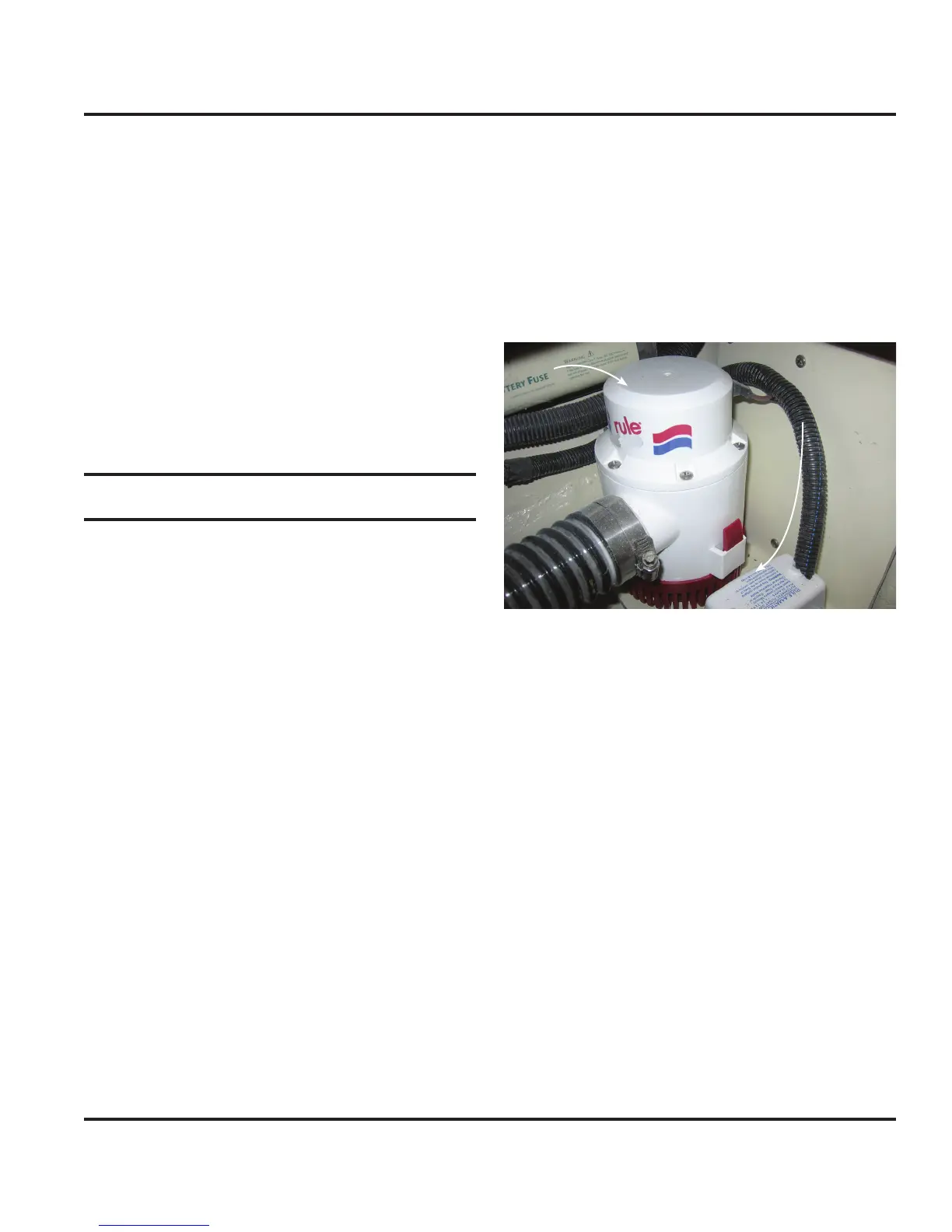Waste and Sanitation Systems
10.3
10.1.2 Overboard Discharge
Some discharges have valves associated with them. The
Black water, or Raw sewage system from the head is one
such system. Located near the macerator pump (Fig.
10.5) (discussed later in this section), is the Overboard
Discharge Valve. This is a ball type valve in which the
chopped solid waste from the holding tanks is disposed
of after passing through the macerator.
Basically, all pumps are somewhat associated with the
Waste / Sanitation system, but in this section we will
focus on the pumps that are directly associated with the
process of pumping waste overboard. The supply func-
tion of these pumps are discussed in other sections.
Note: The Overboard Discharge Valve should remain closed at
all times except when in use.
10.2 Pumps
Probably the most important pump system on your boat
is the bilge pump system. Your boat is supplied with one
bilge pump and one optional emergency bilge pump. All
are part of the Gray water system. This emergency bilge
pump has the pumping capacity of 66 gallons a minute
from your bilges. Your other bilge pumps vary according
to boat model and size, please refer to the documentation
for your bilge pumps for the pumping capacities.
We are concerned about your safety. You should review
all information contained in this manual, as well as, the
manufacturer’s manuals concerning all systems on your
boat, but the bilge pump system will be one that is crucial
to learn. These pumps have the function of clearing water
from the bilges of your boat. You must ensure that they
are kept clean and functional in order for these pumps to
complete that task.
10.2.1 Emergency Bilge Pump (OPTIONAL)
The emergency, or High Water Bilge pump, is generally
located in the center bilge compartment of your boat. It
is mounted about 12” off the bottom of the bilge. This is
why it is referred to as a High Water Pump. We discussed
in the DC Electric section about the float switch and
the operation of the pump, so, you already understand
that the water level has to be above a high water level
to operate this pump. Fig. 10.2 gives you a look at the
emergency bilge pump aboard your boat.
Should the water level rise above the high water mark,
and the emergency bilge pump comes online, you will
hear a high water alarm from the helm along with a solid
red light. It would also be important to mention here that
when you hear the high water alarm (Fig. 10.3), it means
that high water exists in the bilges and it is time to take
action. Refer to the “Chapman’s Piloting, Seamanship
and Boat Handling.” We have supplied you with a copy
of this book aboard your new boat, but if you do not have
one, it is a wise idea to purchase this boating manual. It
is full of useful safety and navigational information.
Check your Mechanical Arrangement illustration in the
Boating Safety Section for the location, and the Waste
/ Sanitation illustration at the end of this section, for the
discharge hose routing for this or any pump.
10.2.2 The Main Bilge Pump
This pump is located in the lowest parts of the bilge.
The function of this pump is to clear the water before it
reaches the high water level.
Careful maintenance should be made to these systems
to ensure they are always operational. Check the DC
Electric Section, or the Operation and Maintenance
subject of this section, to find the details about operation
of these pumps and the details of how to manually run
them.
10.2.3 Shower Sump
Due to the level of the shower drain, we have installed
a pump system to rid the boat of water from your shower.
The small holding tanks also acts as a collection point
for hair and other waste materials that might get washed
down the shower drain.
Float Switch
Pump
Fig.10.2

